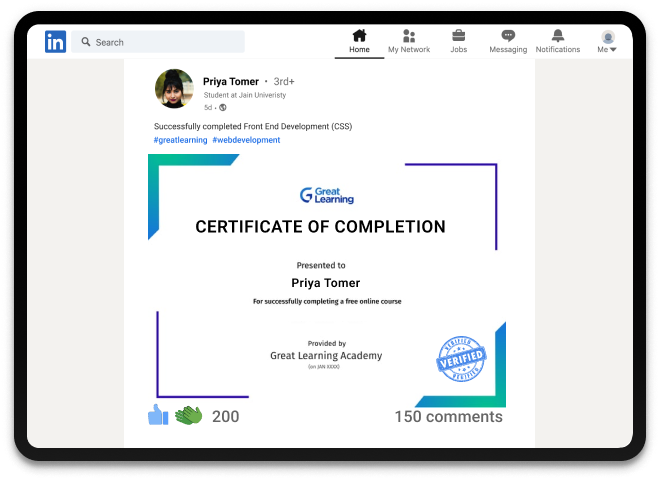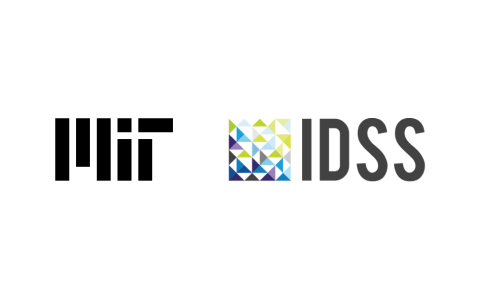Data Analysis using PySpark
Learn Data Analysis Using PySpark basics in this free online training. This free course is taught hands-on by experts. Learn about Real Time Data Analytics, Modelling Data & lot more. Best for Beginners. Start now!
What you learn in Data Analysis using PySpark ?
About this Free Certificate Course
PySpark is an interface developed for Apache Spark programmed in Python. Data is being generated continuously with the ability to draw insights from data and act on those insights is becoming an essential skill. Python is the top programming language globally which helps elevate Spark’s capabilities and helps you have an easy-to-use approach to learning the world of big data. It allows the programmer to develop applications using Python APIs. It helps the user perform more scalable analysis and pipelines. It interacts with Spark using Python to connect Jupyter to Spark to give rich data visualization.
In this Data Analysis using PySpark course, you will be introduced to real-time data analytics and learn about modelling data analytics, types of analytics, and Spark Streaming for real-time data analytics. Lastly, a hands-on session for analytics will be done using Twitter data. At the end of the course, you will be able to perform data analysis efficiently and have learned to use PySpark to analyze datasets at scale.
Course Outline
Real-time data analysis is a discipline that provides scope to draw insights through applying logic and mathematics to data to make better decisions quickly.
Modelling data uses different algorithms and varies on the inputs. While Descriptive, Diagnostic, Predictive and Prescriptive are the different types of analytics.
Spark steaming is used in real-time analysis as an integral part of Spark core API. It provides scalable, high-throughput, and fault-tolerant streaming application development opportunities for live data streams.
This section will demonstrate to you a sample analytics problem using Twitter data.
With this course, you get
Free lifetime access
Learn anytime, anywhere
Completion Certificate
Stand out to your professional network
1.0 Hours
of self-paced video lectures
Frequently Asked Questions
How do you analyze data in PySpark?
PySpark distributes the data to other end devices since it doesn’t make any sense to distribute a chart creation. It transforms the user-defined data using the toPandas() method to transform the user’s PySpark data frame into a pandas data frame. Users can then use any charting library of their choice.
Is PySpark a Big Data tool?
PySpark is one of the most popular Big Data frameworks to scale up tasks in clusters. IT exposes the spark programming model to Python, and it was primarily designed to utilize distributed, in-memory data structures to improve data processing speed.
Can Python be used for data analysis?
Yes, Python can be used for data analysis purposes. When combined with Spark, it works even better to analyze big datasets and draw useful visualizations.
What is PySpark used for?
PySpark is involved in processing unstructured and semi-structured datasets. It serves as an optimized API to read data from different sources containing varying file formats. Usually, PySpark can be used with SQL and HiveQL to process the data.
How do you use PySpark efficiently?
PySpark can be used efficiently when combined with SQL and HiveQL. You will have to be through with all the data science concepts, have a good hold on the libraries and Python programming.
Success stories
Can Great Learning Academy courses help your career? Our learners tell us how.And thousands more such success stories..
Related Big Data Courses
Popular Upskilling Programs
Explore new and trending free online courses
Data Analysis using PySpark Course
PySpark is a popular framework that is a collaboration of Apache Spark and Python used for big data analysis. Here are some key aspects that are typically covered in a PySpark course:
Introduction to Apache Spark
Apache Spark is an open-source distributed computing framework designed for big data processing and analytics. It allows for efficient and parallel processing of large data sets, making it a popular choice for data scientists and engineers. A PySpark course will typically start with a comprehensive introduction to Apache Spark, its architecture, and its key benefits over traditional big data processing frameworks.
PySpark basics
To start working with PySpark, a person needs to set up the environment, which a PySpark course will cover. PySpark is built on top of Apache Spark and uses the Python programming language, making it an accessible and user-friendly option for data analysis. The course will cover the basics of PySpark, including Resilient Distributed Datasets (RDDs) and Spark DataFrames. RDDs are the fundamental data structure in Apache Spark, while Spark DataFrames are a higher-level abstraction built on top of RDDs that allows for more convenient data processing.
PySpark SQL
PySpark provides a SQL interface for querying data, known as Spark SQL. This interface allows for querying data stored in Spark DataFrames using SQL syntax. A PySpark course will cover Spark SQL in depth, including DataFrame operations and Spark SQL functions. The course will also show how to use Spark SQL to perform various data analysis tasks, such as aggregating and joining data from multiple sources.
PySpark MLlib
PySpark includes a library of machine learning algorithms called MLlib. A PySpark course will cover MLlib in-depth, including popular algorithms such as linear regression, clustering, and decision trees. The course will also show how to implement these algorithms on big data sets using PySpark and evaluate their performance.
PySpark Streaming
PySpark Streaming is a real-time processing framework that allows processing data streams in real-time. A PySpark course will cover PySpark Streaming, including its architecture, key features, and how to implement it for real-time data processing tasks.
PySpark GraphX
PySpark includes a graph processing library called GraphX. A PySpark course will cover GraphX, including its architecture, key features, and how to implement it for graph processing and analysis tasks.
PySpark integration with other tools
PySpark can be integrated with other big data tools, such as Hadoop and HDFS, for even more powerful data processing capabilities. A PySpark course will cover these integrations and show how to use PySpark in a big data ecosystem.



















































